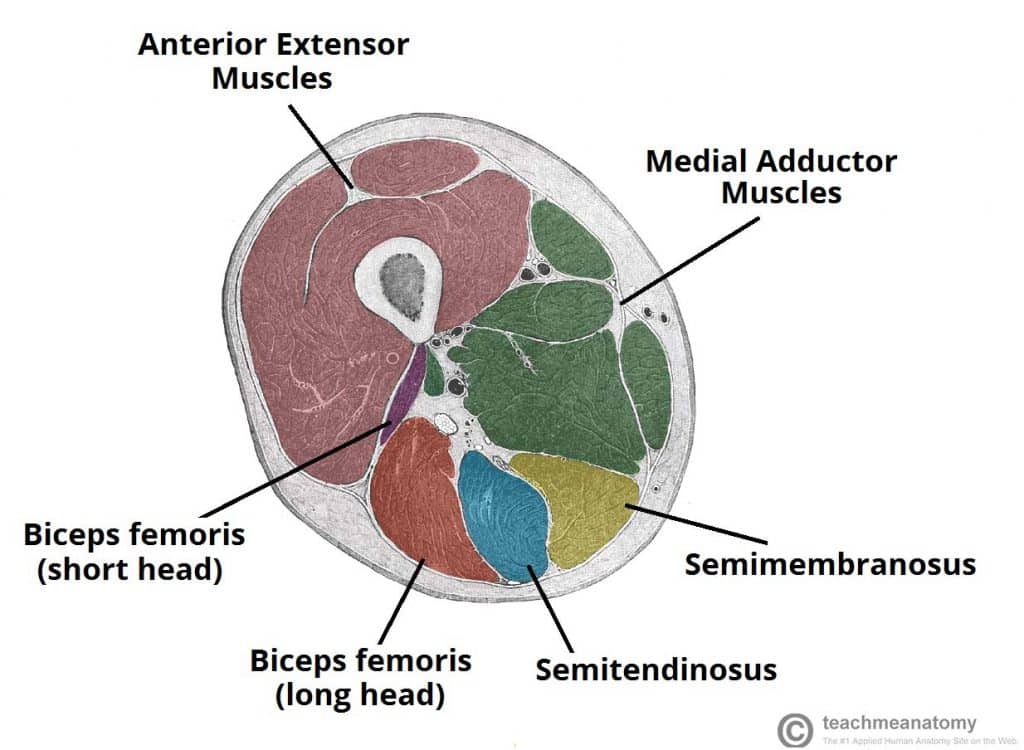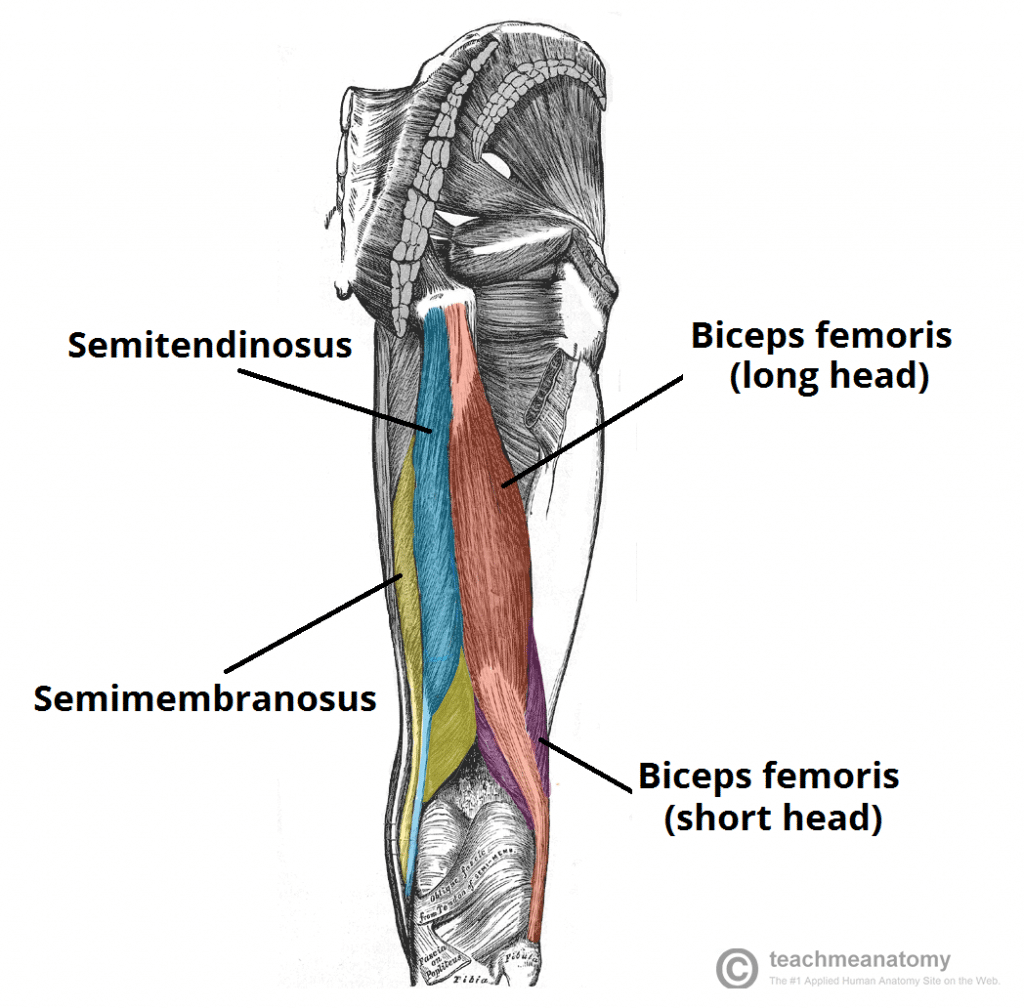The muscles in the posterior compartment of the thigh are collectively known as the hamstrings. They collectively act to extend at the hip and flex at the knee.
These muscles are innervated by the sciatic nerve (L4-S3), with arterial supply from the inferior gluteal artery and perforating branches of the deep femoral artery.
In this article, we shall examine the anatomy of the muscles in the posterior thigh – their attachments, actions and clinical correlations.
Pro Feature - 3D Model
Muscles in the Posterior Compartment
The muscles located within the posterior compartment of the thigh are the biceps femoris, semitendinosus and semimembranosus.
Note: The hamstring portion of the adductor magnus has a similar action to these muscles, but is located in the medial thigh.
Biceps Femoris
The biceps femoris has two heads (long head and short head) and is the most lateral of the muscles in the posterior thigh. The common tendon of the two heads can be palpated laterally within the popliteal fossa (posterior knee region).
- Attachments: The long head originates from the ischial tuberosity of the pelvis. The short head originates from the linea aspera on posterior surface of the femur. Together, the heads form a tendon, which inserts into the head of the fibula.
- Actions: Flexion at the knee. It also contributes to extension of the thigh at the hip, and lateral rotation at both the hip and the knee — the latter occurring only when the knee is flexed.
- Innervation: Long head innervated by the tibial part of the sciatic nerve, whereas the short head is innervated by the common fibular part of the sciatic nerve.
Semitendinosus
The semitendinosus is a largely tendinous muscle. It is situated on the medial aspect of the posterior thigh and superficial to the semimembranosus.
- Attachments: Originates from the ischial tuberosity of the pelvis and attaches to the medial surface of the tibia.
- Actions: Flexion of the leg at the knee joint. Extension of thigh at the hip. Medially rotates the thigh at the hip joint and the leg at the knee joint.
- Innervation: Tibial part of the sciatic nerve.
Semimembranosus
The semimembranosus muscle is flat and broad. It is located deep to the semitendinosus on the medial aspect of the posterior thigh.
- Attachments: Originates from the ischial tuberosity (more superiorly than the origin of the semitendinosus and biceps femoris). Attaches to the medial tibial condyle.
- Actions: Flexion of the leg at the knee joint. Extension of thigh at the hip. Medially rotates the thigh at the hip joint and the leg at the knee joint.
- Innervation: Tibial part of the sciatic nerve.

Fig 2
Cross section of the thigh, showing the position of the major muscle groups.
Clinical Relevance
Hamstring Avulsion Fracture of the Ischial Tuberosity
An avulsion fracture occurs when a fragment of bone attached to a ligament or tendon is pulled away from the main mass of the bone.
The muscles of the posterior thigh all originate from the ischial tuberosity of the pelvis. In rare cases (predominantly adolescents), sudden and forceful contraction of the hamstrings can result in an avulsion fracture of the ischial tuberosity.
Patients with this injury often experience a sudden pain in the posterior thigh, followed by an inability to walk. It can be associated with sciatic nerve damage (the nerve lies in close location and could be compressed by a displaced fragment of bone).
Treatment of avulsion fractures of the ischial tuberosity can be conservative or surgical:
- Conservative: Rest, pain control and physiotherapy.
- Surgical: Open reduction and internal fixation (setting the fracture in the correct position and then fixing in place with metalwork).
Pro Feature - Dissection Images


